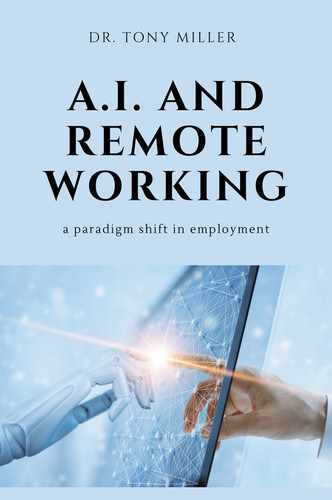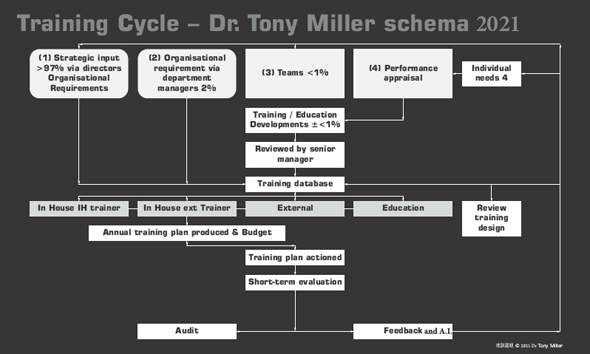Automating Training Needs Analysis and Training Evaluation
Training Needs Analysis—The Old Way. You Could Not Make It More Complicated if You Tried!!
Uncover Performance Gaps
Gaps in performance are sometimes referred to as front-end analysis. But since the advent of competency frameworks, nearly all of these old processes are now redundant, along with the use of Fish Bone Diagrams, meta-analysis for training, and DIF analysis (difficulty, importance, frequency).
When to Conduct a Training Needs Analysis—The Old Approach
Proceed with a training needs analysis (TNA) if you have identified that one of the root causes of an existing performance gap stems from a performer’s lack of knowledge and/or skill. After all, if performers don’t know or understand a concept, they have to be educated. The identification of this root cause calls for an education or training solution, and TNA is the first step to get you there.
A TNA itself is a conglomeration of multiple subanalyses; which ones you will need to conduct will vary by situation and the amount of prior knowledge you have. Subanalyses may include the following:
Audience Analysis—an examination of the target audience characteristics, such as geographic location, prior knowledge, existing skill set, age, interests, and so on.
Job Analysis—the breakdown of a specific job function into its respective duties and tasks, as well as required skills, knowledge, and competencies.
Task Analysis—the breakdown of individual tasks into their respective steps, required tools/inputs, and timing.
Content Analysis—a thorough review of any material, resources, and input from subject matter experts about what is included in the training.
Environment Analysis—a close look at the work environment that will help determine what can and should be replicated in the learning setting.
Media Analysis—a determination of what delivery media make sense given the content, audience, and design constraints.
Cost–Benefit Analysis—an analysis of the return on investment (ROI) expected from the training.
Automating all Training Needs Analysis for Competency-based Training
We have already discussed this issue in Chapter 4. You would need to do some process redesign before you start applying AI. The concept is to automate TNA and training evaluation fully. This process has dumbfounded training departments for decades; even now most training functions take a long time to do TNA, and their best attempt at evaluation has been to use the Kirkpatrick model designed in 1954 (Miller and Brelade 1997).
The organization needs to set standards for the minimum, average levels required in it. This sets the parameters for scoring competencies. In Figure 5.1, we can see that the organization has set a minimum standard and an average. This is quite common, but this needs to be decided for your specific organization.
Once the standards have been set, the line manager will award scores for each competency on a 1-to-100 scale during the performance appraisal. This is easy to do, as the line manager is the only person who observes the behavior of employees throughout the year. The definition of a competency is

Figure 5.1 Competency approach—New method
A key observable behavior.
Once the score is allocated, if the number falls below 70 percent, it will automatically indicate that training is needed (whatever method you use).
The process is then fully automated; a request is generated and then auctioned. It’s so straightforward—no need for consultation, discussion—fix the training, which is in line with that competency. The amount of work that this will save in the area of training functions is massive. Also, as you will know the unit costs for the four categories of training (AI will do this), you have an exact record of cumulative expenditure. Likewise, if the training is for the next financial year, the system will automatically be able to build the budget.
Fully Automating Training Evaluation for Competency-based Training
The line manager will, of course, do an evaluation. This is the only person who observes the employee on a day-to-day basis, and will be able to see improvement. At the next appraisal, the amended score is entered for a particular competency. The ROI will be automatically calculated as it is based on the difference in scores.
For example, if an employee was identified as having a score of 60 percent in the area of decision making, he or she would automatically go for training on decision making. The course content would already be included in the competency specification, so AI would merely cross-reference and fit the person to an appropriate course. Then later in the year during performance appraisal, the manager would enter the new score. Let’s say the score is 71 percent; the difference will be calculated automatically and a financial benefit produced (ROI).
Every year one will be able to see how much total financial value the training function has added to the organization. It is modern technology that has made this possible.
What to Do with Performance Training?
Between 95 and 98 percent of all training in the West and the Middle East is competency based. Out of this percentage, not much is performance-based training. Performance based training is all about output: where the output is doing more, or doing the same work but for less cost. There are only about thirteen performance-based courses I can recall (Figure 5.2), and these at the moment need a proper TNA and preevaluation before training takes place. What competency-based training should do is that it must add significant financial value. At the moment this type of training is always manually evaluated
AI will be able to do competency-based training in its entirety as part of the integrated training process (Figure 5.3).

Figure 5.2 Performance-based training
Figure 5.3 Process map before AI
Bonus for training functions can be very quickly linked to how much ROI these functions generate every year.
AI would also be able to rank vendors of training on the basis of the ROI of the training they deliver, moving away from the concept that if the delegates like the trainer, then the course must be right.
There will also have to be significant amendments in how training is provided mainly for Generation Z or iGen. Z or iGen (Miller 2018). The Changing Face of Training. White paper Google Scholar it is unlikely that the traditional classroom lecture–type training will be suitable for this group as it will make up 24 percent of the available working population by 2020. (Workforce (2017) Will Millennial’s and Gen Z Rule the Workforce by 2020?)

